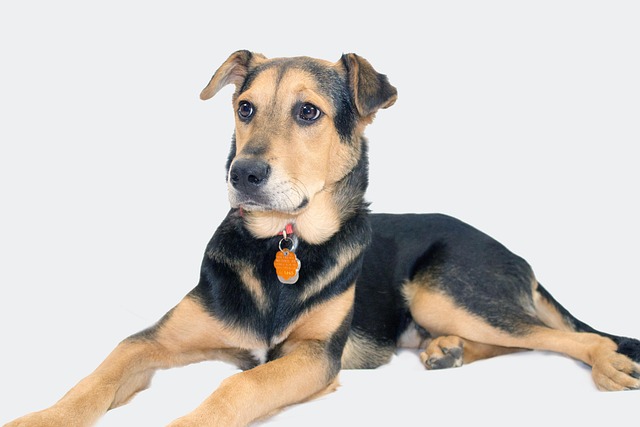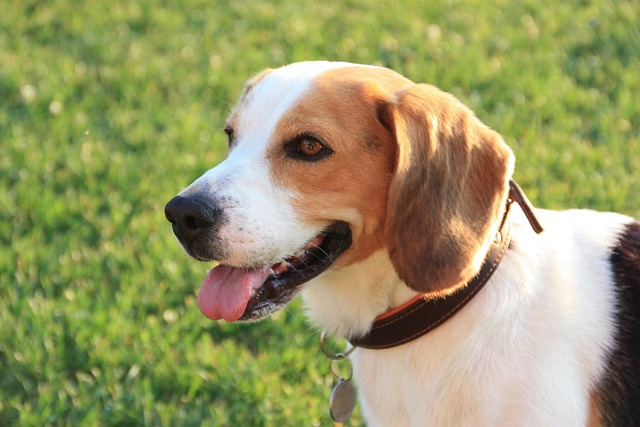
Why is the dog shaking in the cage?
Ever found your dog trembling inside their cage and felt that pang of worry? That shivering isn't just a random twitch—it’s your dog’s way of sending out an SOS.
In the living room late at night, the table lamp casts a gentle halo in the corner. Your dog is curled up in a furry nest, and his belly rises and falls gently with his breathing. Suddenly, his limbs begin to tremble slightly, and his nose wings twitch quickly, as if he is in some kind of tense dream. You squatted down in a hurry, and your fingertips touched his warm fur, and your heartbeat accelerated involuntarily - why is the little life that chased butterflies during the day trembling in his sleep at this moment? As owners, we always hope to understand every subtle reaction of our furry children, and this trembling that occurs with breathing during sleep may be the natural rhythm of life or a subtle signal from health.
Dogs' sleep is not a consistent deep sleep state, but follows a complete sleep cycle like humans. When they enter the rapid eye movement sleep period (REM sleep), the cerebral cortex will be highly active, and the discharge frequency of neurons is almost the same as when they are awake. At this time, the nerve center responsible for controlling muscle tension will temporarily "shut down" to prevent the dog from translating the actions in the dream into actual behavior - such as knocking over the sofa when dreaming about chasing a hare. But this muscle inhibition is not absolutely perfect. Some small nerve impulses may break through the defense line and cause slight twitching of the limb muscles, which looks like "rowing in the air". This phenomenon is particularly common in puppies. The underdeveloped nervous system is like a precision instrument being debugged, and the nerve signal transmission during REM sleep is more prone to "small faults". When your puppy whimpers in his sleep and his front paws kick unconsciously, it is actually his brain that is sorting out the memory fragments of the day: the touch of the first bite of the molar stick, the parabolic trajectory of the owner throwing the Frisbee, these experiences will be re-encoded in the dream, and the trembling is just a small spark splashed when the synapses are excited.

The dog's body temperature regulation system is like a precision thermostat, and the normal body temperature is maintained between 38.5-39.5℃, which is slightly higher than that of humans. When the ambient temperature is lower than the comfort zone, the body will start a series of warming mechanisms: erecting the coat to increase the insulation layer, contracting the blood vessels to reduce heat loss, and slight shivering is the skeletal muscle contracting to generate heat autonomously. This kind of shivering during sleep is often small in amplitude, accompanied by regular breathing ups and downs, just like the body gently reminding: "It's a bit cold, I need to add a blanket." Observing the body posture during shivering can reveal subtle clues. If the dog curls up into a tight ball of hair, with its paws tightly pressed against its abdomen and its ears drooping back slightly, it means that it is conserving heat by reducing its body surface area. At this time, touching the foot pad will feel slightly cooler than usual. This is a physiological response of peripheral vasoconstriction. In particular, short-haired dog breeds, such as French bulldogs and whippets, have lost the protection of thick coats and are more sensitive to temperature changes. In air-conditioned rooms or autumn and winter nights, shivering during sleep to regulate body temperature has almost become the norm.
When shivering goes beyond the physiological scope and becomes a frequent abnormal symptom, we need to keep our ears alert. Neurodegenerative diseases such as canine ataxia can cause abnormal function of the cerebellum, which controls muscle coordination. Tremors during sleep may be accompanied by an unstable gait when awake. Hypoglycemia is particularly common in puppies and toy breeds. When blood sugar levels are below the normal range, the brain will send abnormal electrical signals due to insufficient energy supply, which manifests as paroxysmal tremors in the limbs, and may be accompanied by white gums and low body temperature. Pain is another hidden "culprit". Large dogs with hip dysplasia will still feel continuous dull pain in the damaged joints even during sleep. The body will unconsciously relieve discomfort through muscle contraction, which manifests as tremors in one or both hind limbs. This tremor is often regular and often occurs after changing sleeping positions. When the painful area is touched, the dog will avoid it. At this time, sleep is no longer a haven for relaxation, but a battlefield for the body to fight against pain.
As owners, what we can do is to be careful observers. Prepare a sleep log to record the time, duration, and accompanying symptoms of the tremor. This information can help veterinarians make more accurate judgments. When trembling occurs, don't rush to wake up the dog. The sudden awakening may cause it to fall directly from the dream into the panic of reality, just like the irritability of humans when they are roughly awakened from a beautiful dream. You can gently stroke the fur with your fingertips, and convey a sense of security with the sound of steady breathing, so that it can naturally spend the dream stage in the warm company. Creating a suitable sleeping environment is a silent protection. Prepare a detachable warm sleeping pad for short-haired dogs, and leave a corner away from the air outlet in the air-conditioned room so that the body temperature regulation system does not need to work excessively; for elderly dogs, place a memory foam pad in the nest to reduce joint pressure, just like adding a soft cushion to an aging machine. When we watch the dog stretching in the carefully arranged nest, listening to the occasional slight tremor mixed in its even breathing, a gentle certainty will surge in our hearts: those tremors are not a sign of loneliness, but the rhythm of life and life snuggling with each other.
In countless nights with dogs, we have learned to interpret the code of life from trembling. It could be a happy run in a dream, a subtle effort by the body to regulate temperature, or a health reminder that needs attention. But no matter what, when we understand these subtle changes with love and patience, every tremor will become a mark that deepens our bond with each other. Just like the night light left for the dog in the middle of the night, our protection is silent warmth, letting this furry little life know: no matter whether the dream is tense or sweet, when you open your eyes, there will always be a warm embrace waiting.

Ever found your dog trembling inside their cage and felt that pang of worry? That shivering isn't just a random twitch—it’s your dog’s way of sending out an SOS.

Sharing food with your furry companion feels like an act of love, right? Those pleading eyes under the dinner table are hard to resist.

Coming home to chewed-through doors, frantic barking echoing from the neighbor's security cam, or a trembling, panting dog covered in drool – severe separation anxiety is heartbreaking.

Picture coming home to find your coffee table chewed to splinters, your curtains shredded, and your Beagle trembling by the door—panting like they’ve chased a rabbit for miles.

If you've ever cringed while picking up your dog's rock-solid poop, you're not alone. Hard, dry stools aren't just an unpleasant cleanup—they're a clear sign that your furry friend's digestive system is crying out for help.

Let’s be real—when Fido leans in for a slobbery kiss and his breath smells like last week’s trash, your first instinct might be to grab your minty-fresh human toothpaste.